News
Women’s Clothing at Fort Phil Kearny Presentation
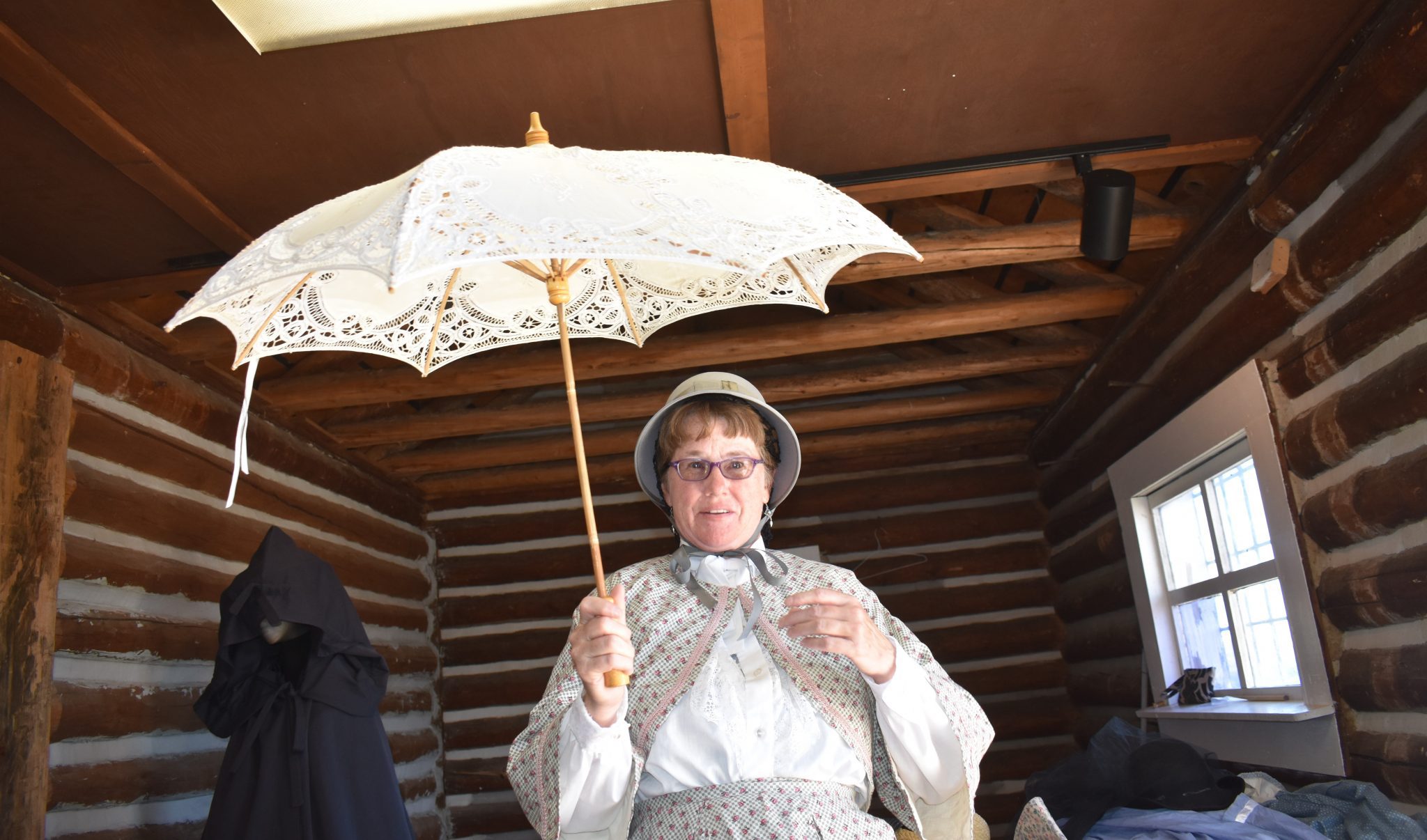

Published
2 years agoon
By
cvannoy
Patti Wilson models a parasol
On Sunday, August 7, at Fort Phil Kearny, Patti Wilson, one of the Fort Phil Kearny Regulars, gave a demonstration on how women dressed in the years 1866-1868, when Fort Phil Kearny was an active fort on the Wyoming frontier.
Wilson gave her presentation wearing an authentic frontier dress and sunbonnet, and talked about how fashion came from Europe,
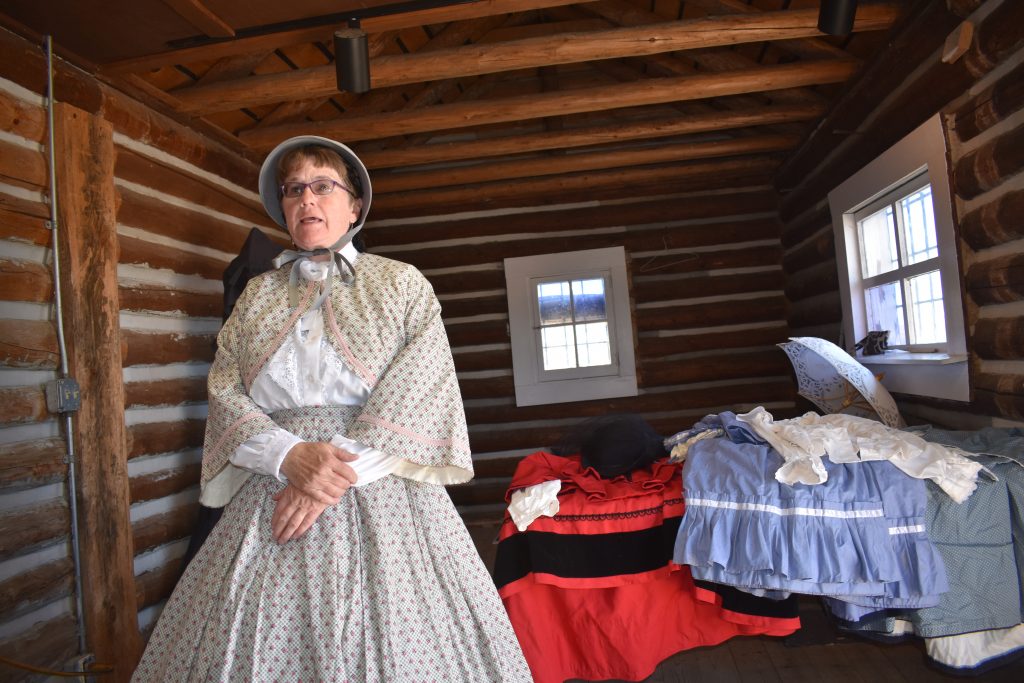
During the 1860s the fashion demanded a small waist, often created with the help of the tight lacing of a corset, “Corsets really aren’t uncomfortable to wear,” Wilson said. Laced in the corset, and wearing wide skirts, either created with hoops, or several petticoats, gave the wearer a small torso, and a tiny waist, flaring into wide hips.
The hoops in the skirts and the stays in the corset were made either of wood, whalebone, or whale baleen. Corsets were laced up the back and the lace was tightened to achieve the desired waist size.
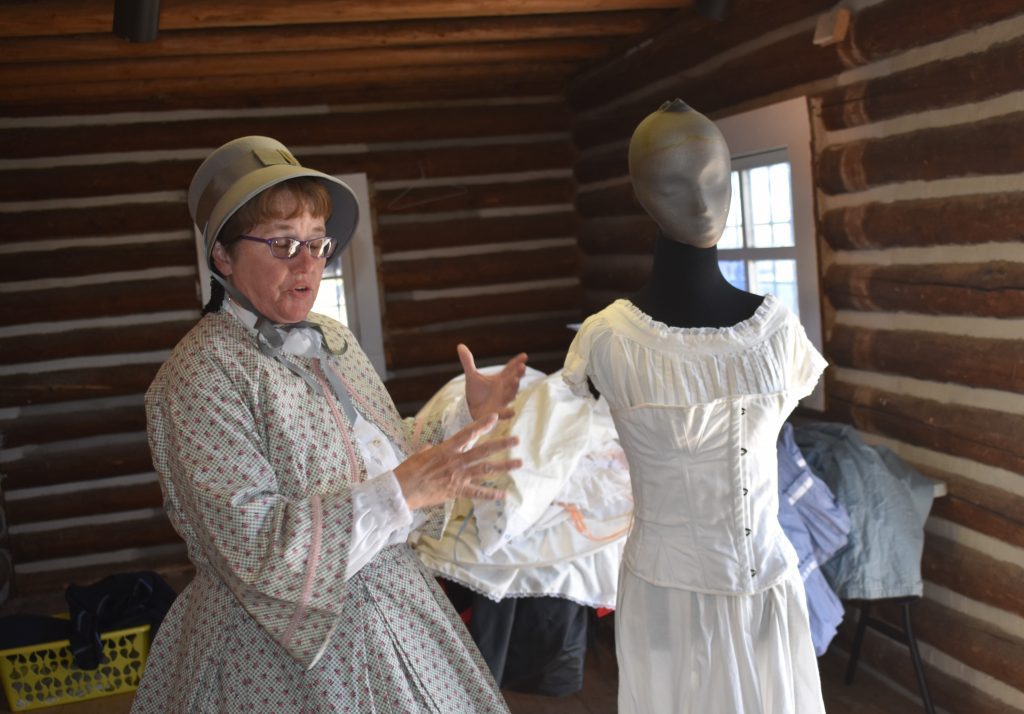
There were some women at Fort Phil Kearny and on the other western frontier posts. Margaret Carrington, the wife of Col. Henry Carrington, and Francis Grummond, whose husband Lt. Grummond was killed in the Fetterman Fight, were two of the women who lived at Fort Phil Kearny. Other women were laundresses, often wives of the enlisted men, and sometimes the officer’s wives had female household servants as well.
Cotton was the most commonly used material for clothing, as it was easy to wash, and most women wore cotton for working around the home. The fabrics used in more formal dresses was not as easy to keep clean and was more expensive than cotton. Wilson said that they could be spot cleaned if necessary.
She said they always wanted to protect your arms from the sun, as they didn’t have sunscreen then. One dress she showed had removal long sleeves that could be pinned when needed. One skirt didn’t have hoops, but had several layers of fabric, and they may have worn extra petticoats to give the skirt it’s fullness.
She showed a dress with a full skirt that could have been used by a woman riding side saddle, and she demonstrated a hat with a veil that could blow in the breeze. They would not have won the hoop skirt when riding, but the skirt was still very full.
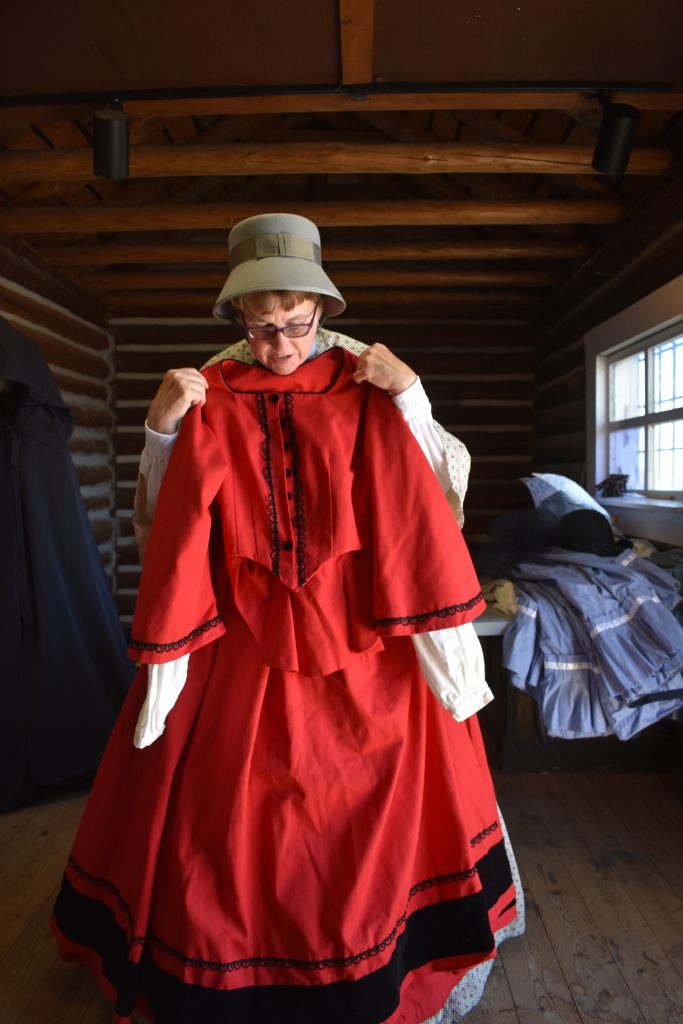
She demonstrated hats and bonnets that were worn to keep the sun off the ladies face, and she modeled a parasol that was often used as well, usually by the high ranking ladies on the post. The officer’s wives could stay inside during the heat of the day, but the women who worked outside, either on farms or doing laundry at the fort, need protection from the sun, with long sleeves and broad-brimmed hats.
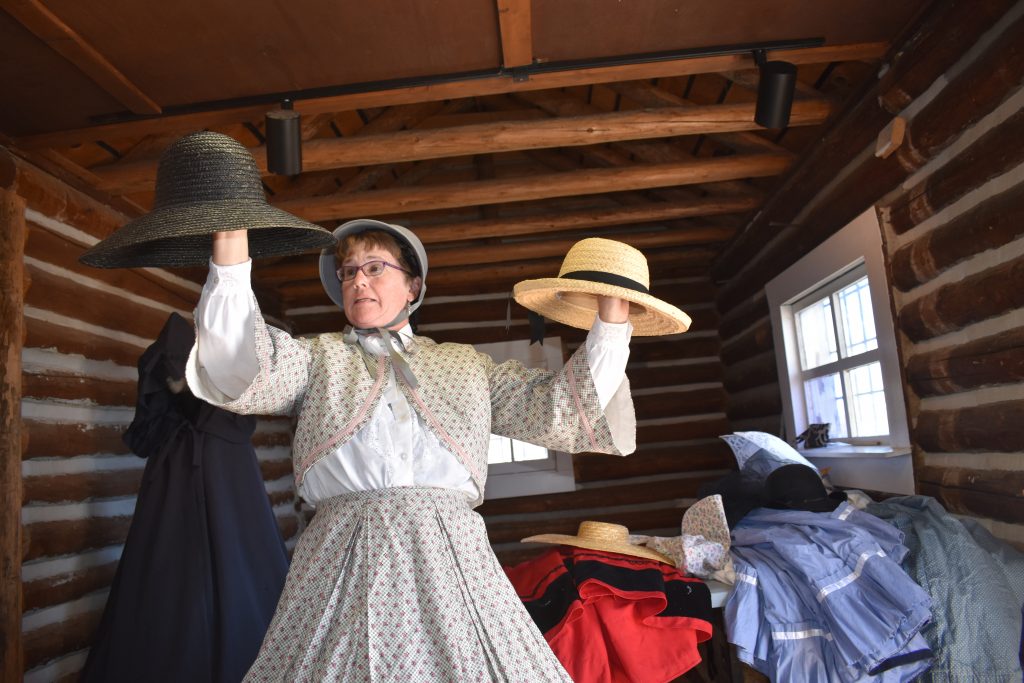
In the winter there were bonnets that had a little quilting inside to help keep their heads warmer, and they would wear woolen stockings under the skirts. Some skirts were made of wool as well, and they had shawls for extra warmth as well. If they had to go outside in the winter, they did the best they could.
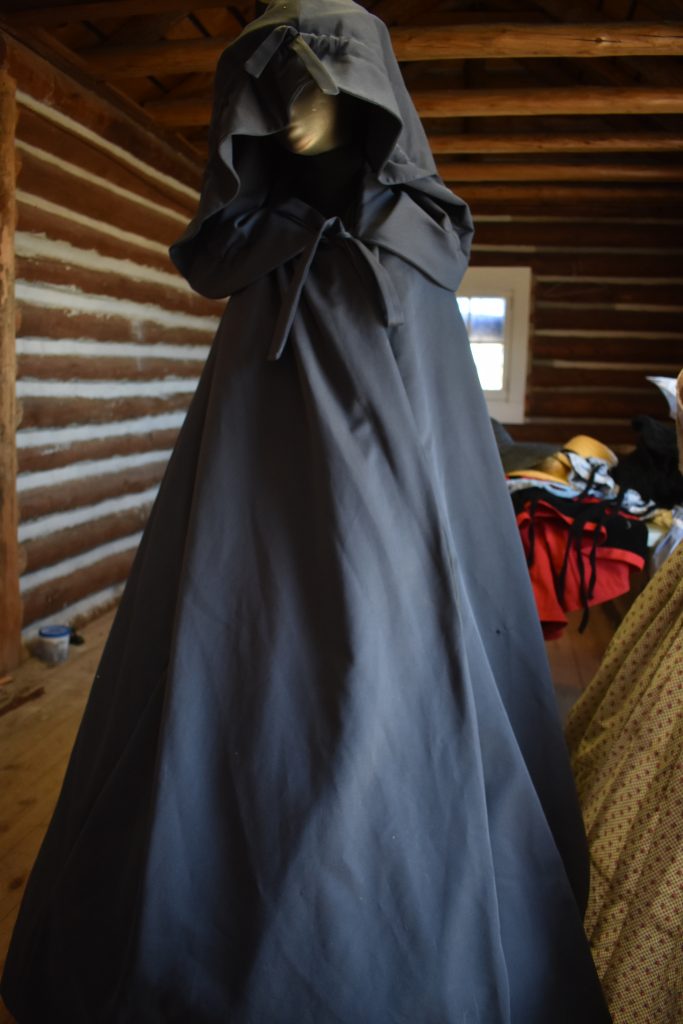
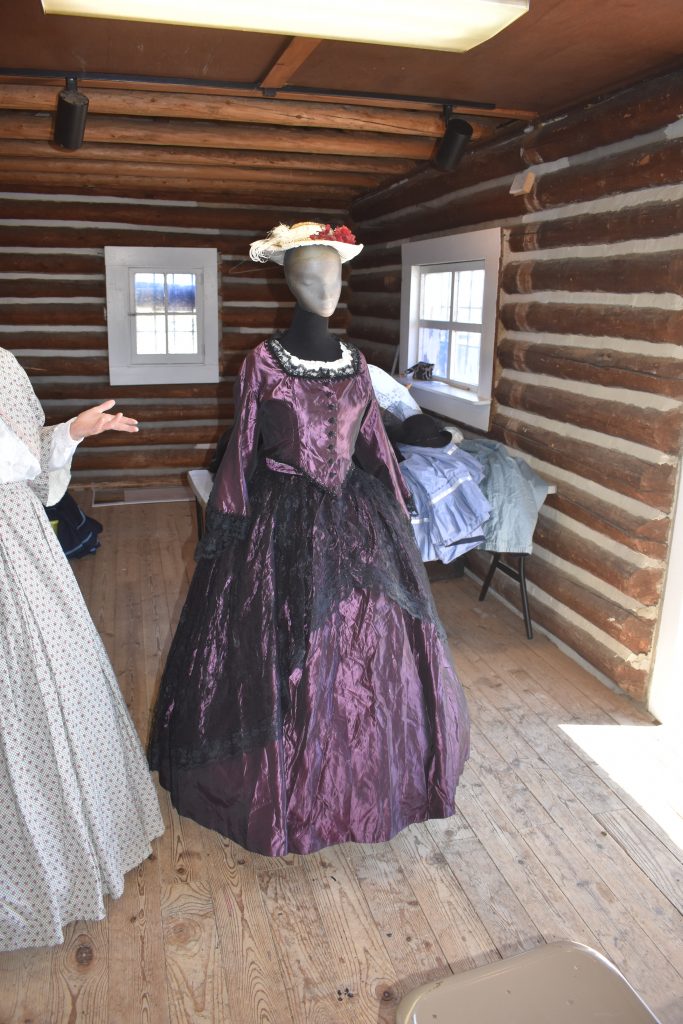
At the end of her talk, Wilson had a dummy dressed in a satin and lace gown, covered by a body-length cape.
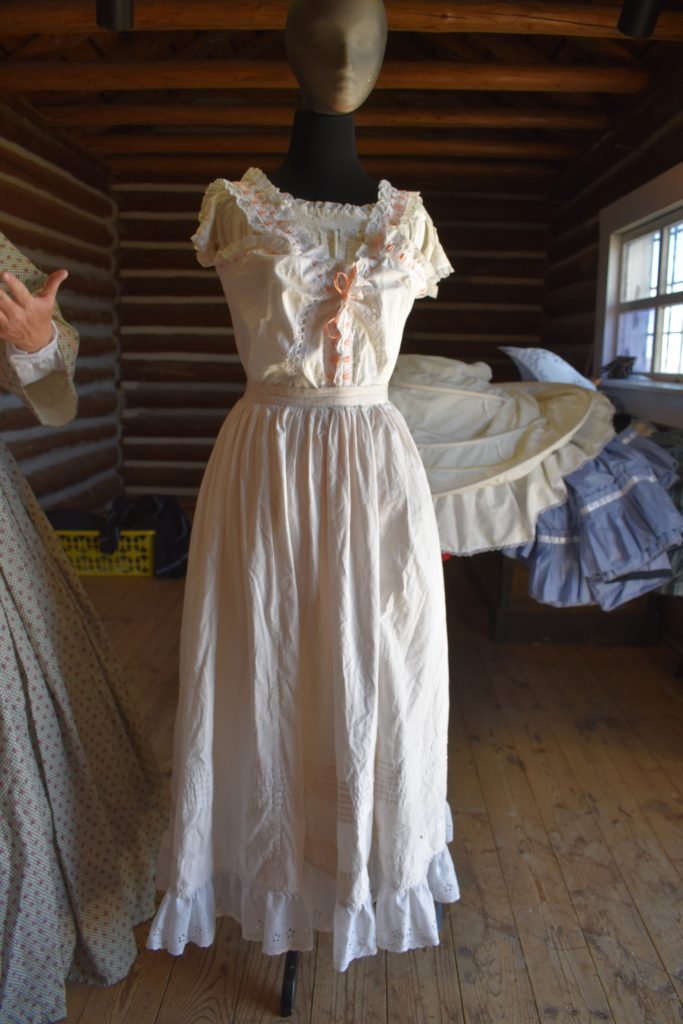
She disrobed the dummy, showing how many layers women wore in the 1860s. Under the dress were the petticoats, and bloomers around the hips, and on her torso the woman would wear a camisole, the corset, and a chemise.
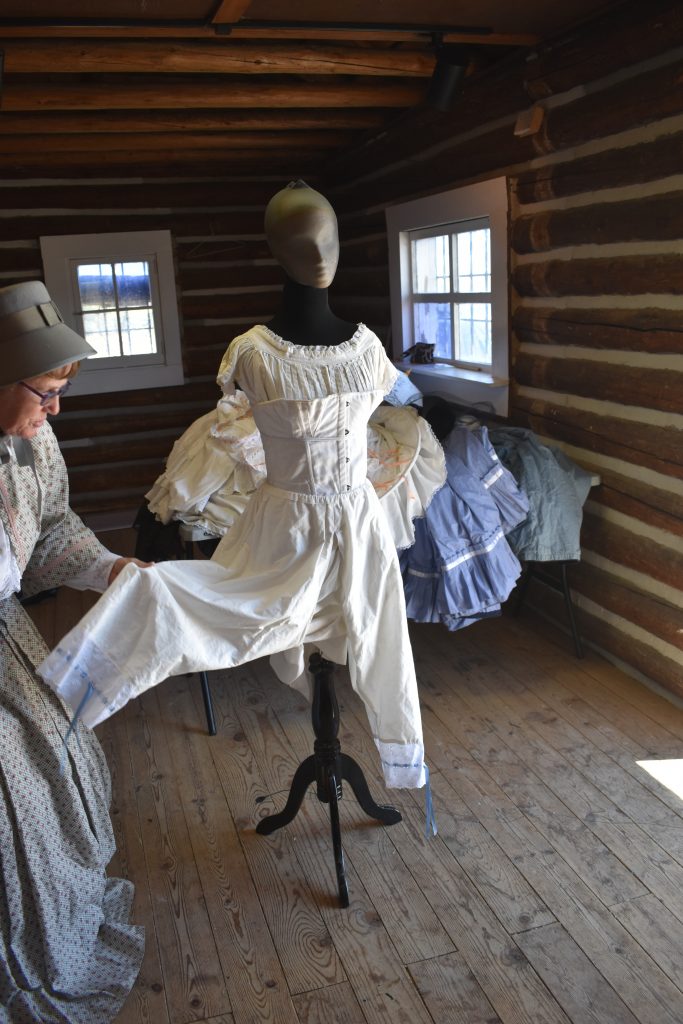

Jacquie hamilton
August 10, 2022 at 8:23 am
Neat presentation!